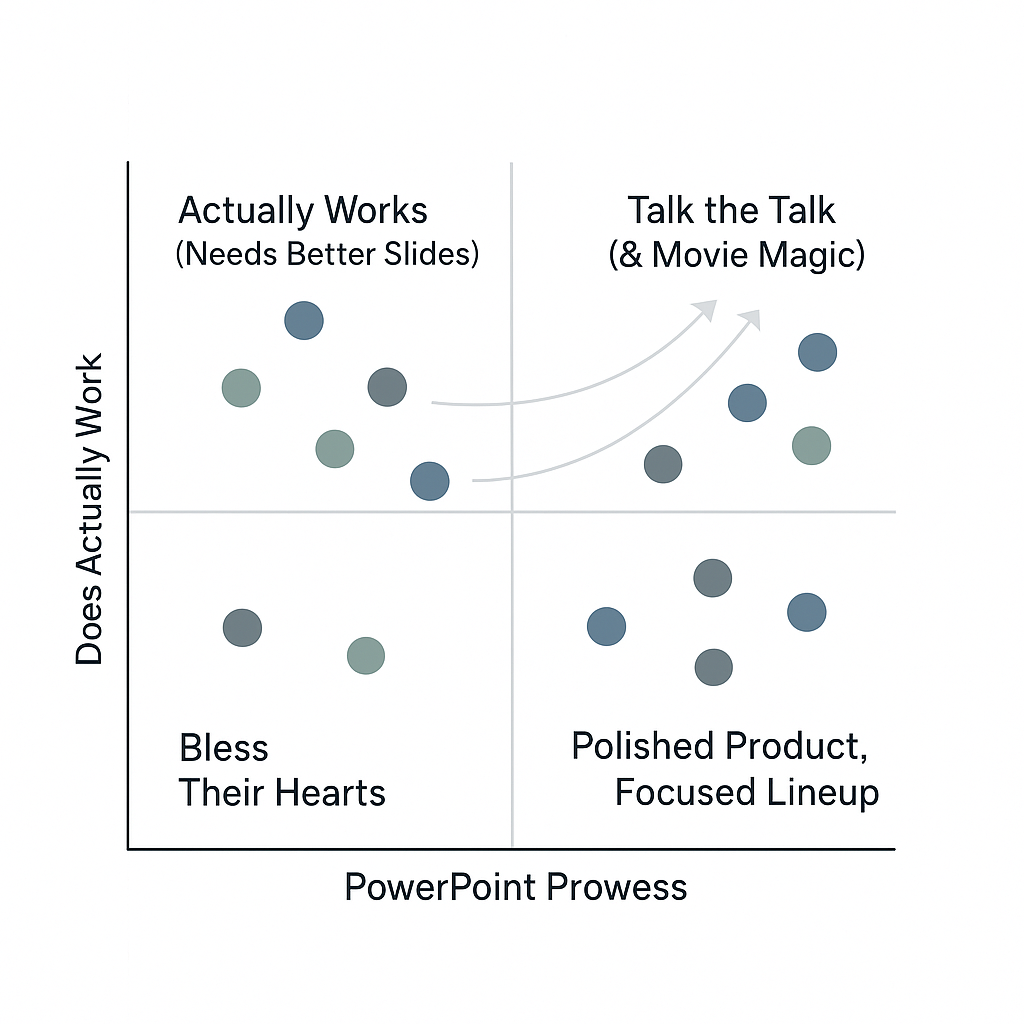
Back to the 90s with the WWW
We’ve all seen the headlines, artificial intelligence (AI) is either a) going to mark the end of humanity, or b) make the world a better place. With all the hype surrounding generative AI and ChatGPT, it reminds me of when the internet first became mainstream way back in the mid to late 1990s. Reactions to this transformative technology were mixed and depended on one’s familiarity with tech, their age, and lifestyle or occupation. Feelings spanned:
- Excitement and Wonder: We were excited about the possibilities the Internet opened up. For the first time, you could send emails, participate in online forums, access a vast amount of information via the World Wide Web (WWW), and even do online shopping. The idea that you could communicate instantly with someone on the other side of the world or access information about virtually any topic was amazing to many.
- Confusion and Feeling Overwhelmed: Some found the concept of the Internet difficult to grasp, and the user interfaces of early web browsers and email clients were a pain in the butt to use. New terms like “email,” “URL,” “http,” and “dot com” were overwhelming for many.
- Skepticism and Fear: Some were worried about privacy and security issues, particularly in relation to online shopping or banking. Others were concerned that the Internet would lead to people spending too much time in front of their computers and not enough time interacting with people in real life. Unfortunately, I think this one is real.
- Digital Divide: The “digital divide” was also a topic of discussion, referring to the gap between those who had access to the Internet (generally younger, wealthier individuals) and those who did not (often older individuals, those in rural areas, or those in lower socioeconomic brackets).
- Impact on Businesses: While some saw the potential of the internet for marketing and sales (hence the dot-com boom), others were slower to adapt and viewed the Internet as a fad or irrelevant to their business.
In a nutshell, the advent of the internet was met with a mixture of excitement, confusion, skepticism, and even fear. Does any of this sound familiar–especially issues around privacy and the digital divide? Over time, as people became more familiar with the technology and its potential uses, many of these initial reactions gave way to broader acceptance.
But Generative AI Is Different, Or Is It?
With the introduction of any new technology, there will always be naysayers and doomsdayers, optimists and dreamers. In fact, there have been three notable transitions that have shaped our modern history.

- The Industrial Revolution (Water + Steam = Mechanized Production): During this period, we saw a shift from an agrarian economy to one dominated by industry and mechanized manufacturing. The Industrial Revolution was characterized by the development of new technologies (like the steam engine), the establishment of factories. We automated many of the manual production tasks.
- Digitization (Electronics + IT = Automated Production): This period is characterized by the rapid technological advancement characterized by the digital revolution and the mass use of computers, the internet, and information technology. This revolution drastically changed the way we work, communicate, and access information.
- The Age of AI (Data + Analytics + Automation = Automated Decisions and Content): This is the period we are in and it certainly is a transformative one. This era is characterized by vast amounts of data that are collected and analyzed using sophisticated AI algorithms, enabling unprecedented insights and automated content generation in real-time.
The world evolves–it always has and always will. This is not a time to heed the words of Eddie Vedder, “I’ve changed by not changing, at all.” The time to act is now.
So what can you do?
Persevere and Prosper
So, what’s happened since the mid to late 90s when we were introduced to the WWW? Did it destroy the world? Of course not, you’re reading this blog. In fact, if you look at the Fortune 500, there are only seventeen companies that didn’t exist back in 1995–483 others are still on the list.[1] This seems to imply that organizations are adaptable and resilient. Perhaps the digital disruption wasn’t all that destructive. With every revolution, opportunities abound. In fact, Professor Julian Birkinshaw, outlines four strategies that organizations can pursue.[2]
- Counteract: Typically, you will see companies fight back by setting up an incubator or innovation office. These units are typically charged with competing directly against the industry disruptors. If the new technology represents an existential threat to the firm, this is generally a good strategy to pursue. However, it’s extremely hard to do well and established firms often struggle to compete with upstarts at their own game. A great example of this is when the US automaker Ford set up distinct units to compete in the electric vehicle (EV) market.[3]
- Amplify: When organizations decide to double down, the idea is for the firm to play to their existing strengths. A great example of this is the ongoing saga for who is going to win the streaming TV wars.[4] In the 2000s, when the industry was still fledgling, Disney could have chosen to compete directly with Netflix and others. Instead of pursuing this strategy, they decided to do what they did best–build and license content. Only time will tell if this was the right strategic option but it is a valid strategy nonetheless.
- Fortify: This is a defensive measure, predicated on vulnerability rather than power, where traditional firms concede territory to newcomers while employing various strategies to secure their ongoing survival. Companies often turn to M&A (mergers and acquisitions) or they may seek help from government and regulators in putting additional constraints on new entrants. Remember when taxis did this to Uber when it first arrived? Now they’re going to be on the Uber platform![5]
- Diversify: This is a strategy where companies look and transition to new opportunities. A great example of this is playing out with the transition from CVS, historically a pharmacy chain, to an end-to-end healthcare provider. It recently paid $10.6B to buy Oak Street Health who run close to 170 healthcare clinics that cater to older patients.[6]
Each of these strategies has its own benefits and risks, and the choice of strategy depends on the specific circumstances of the organization. Regardless of which option is chosen, it’s important to embrace digital technology to improve operational effectiveness. Organizations need to stay alert, be proactive, and follow the strategy that best suits their organization’s needs and capabilities.
Don’t lose touch, make sure you sign up for the newsletter.
If you want to learn more about Modern B2B Marketing, check out our latest book on Amazon.
Are you still confused by AI, pick up a copy of Artificial Intelligence: An Executive Guide to Make AI Work for Your Business.
[1] Birkinshaw, Julian. 2022. “How Incumbents Survive and Thrive.” Harvard Business Review. January 1, 2022. https://hbr.org/2022/01/how-incumbents-survive-and-thrive.
[2] Birkinshaw, Julian. 2022. “How Incumbents Survive and Thrive.” Harvard Business Review. January 1, 2022. https://hbr.org/2022/01/how-incumbents-survive-and-thrive.
[3] “Ford Accelerating Transformation: Forming Distinct Auto Units to Scale EVs, Strengthen Operations, Unlock Value | Ford Media Center.” 2022. Media.ford.com. Ford. March 2, 2022. https://media.ford.com/content/fordmedia/fna/us/en/news/2022/03/02/ford-accelerating-transformation.html.
[4] Berman, Judy. 2023. “The Streaming Wars Have Entered Their Chaos Era.” Time. February 9, 2023. https://time.com/6253697/streaming-wars-disney-chaos-era/.
[5] Marshall, Aarian. 2022. “New York Taxi Drivers Hated Uber. Now They’re Going to Help It.” Wired. March 29, 2022. https://www.wired.com/story/uber-new-york-taxi/.
[6] Cyran, Robert. 2023. “Breakingviews – CVS Pays Exorbitant $10 Bln Price to Diversify.” Reuters, February 8, 2023, sec. Breakingviews. https://www.reuters.com/breakingviews/cvs-pays-exorbitant-10-bln-price-diversify-2023-02-08/.
Categories
- AI Trends (8)
- Analytics Leadership (10)
- Artificial Intelligence (52)
- Data Faces Podcast (5)
- Data Leadership (3)
- Marketing (18)
- Modern Data Stack (3)
- News (8)
- Tech News (1)
Latest Posts
- Stop Chasing Hallucinations—Focus on Agentic Quality
- Gartner’s Four-Box Foreteller of Fortunes (and FUD)
- From “AI-Ready” to AI Reality: Why Actionable Data Strategies Beat Endless Planning
- Team Dynamics Over Technology: The Human Elements that Drive AI Success
- The Customer Hero Principle: Why Your B2B Messaging Falls Flat



